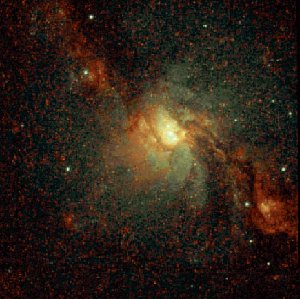
Associate Professor (Astrophysics)
Physics Department
333 Workman Center
New Mexico Tech
801 Leroy Place
Socorro, NM 87801
Phone: (575) 835-5340
Office: Workman 359
| Click here to
return to NMT Physics Home Page. |
| David S. Meier
|
Associate Professor (Astrophysics) Physics Department 333 Workman Center New Mexico Tech 801 Leroy Place Socorro, NM 87801 Phone: (575) 835-5340
|
|
|
|
See Publications for an exhaustive list of my publications. If you would like to use the images below, a citation to the paper is required and I would appreciate an email indicating their use. |